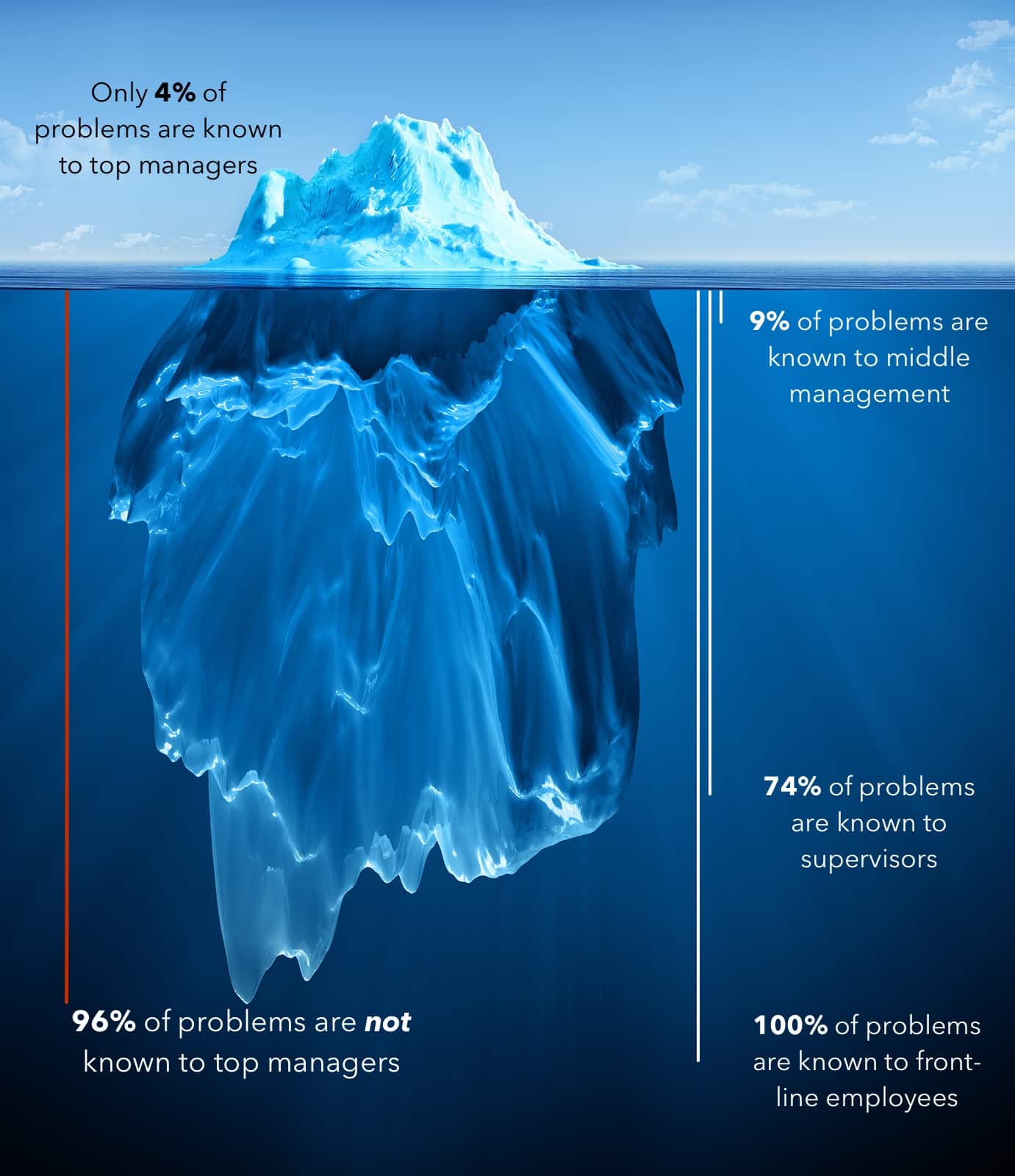“The Iceberg of Ignorance”, a study popularly attributed to consultant Sidney Yoshida concludes: “Only 4% of an organization’s front-line problems are known by top management, 9% are known by middle management, 74% by supervisors and 100% by employees…”
Although the Yoshida study involved numerous mid-sized organizations, the basic findings tend to be the same in organizations of any size. The 1-2-3 process of decision-making is a proven way for leaders to tackle this problem of organizational ignorance.
1-2-3 Defined
1-2-3 says that before anybody decides anything (and even before thinking of preliminary decisions regarding your challenges and opportunities), three key questions should be asked. They are:
- Who can help me make a better decision?
- Who will have to carry it out? and
- Who will be impacted by it?
These people (or representatives of their groups) should then be brought together to discuss the situation and the most beneficial actions to pursue.
Every leader can have a more successful business planning process by melting three limits of the Iceberg of Ignorance.
Melting the Ignorance in Your Organization
People making strategic plans, deciding on budgetary allocations, reviewing benefit plans, etc., need all the input they can get to make the best, informed decisions.
Can employees on the front-line, supervisors and middle managers provide important information to aid planning and decision-making? Without a doubt!
If nothing else, they can bring front-and-center all the knowledge they have of problems in the organization to which senior managers are blind. Often, if they remain unknown to management, these problems impede the of implementation or diminish the results of even the best-laid plans.
Melting Obstacles to Implementation
Will employees on the front-line, supervisors and middle managers have to carry out decisions made by those who do the planning? Of course they will!
And who are better positioned than they to know what kinds of things might get in the way of implementing decisions that are made and plans that are laid? Bringing them into the process and listening to their input will grease the skids for implementation of the decisions and plans.
Melting Resistance to the Impact
Instead of feeling like they are “just a clerk, helper, janitor, receptionist, etc.”, if their thoughts and ideas are solicited, employees will more likely see themselves as full-fledged members of an outstanding team and they will be prepared to weather the impact of decisions and plans.
Once again, better information and enhanced inspiration through employee involvement in decision-making are as simple as 1-2-3 when an organization uses the 1-2-3 approach!
How does your organization avoid The Iceberg of Ignorance?

